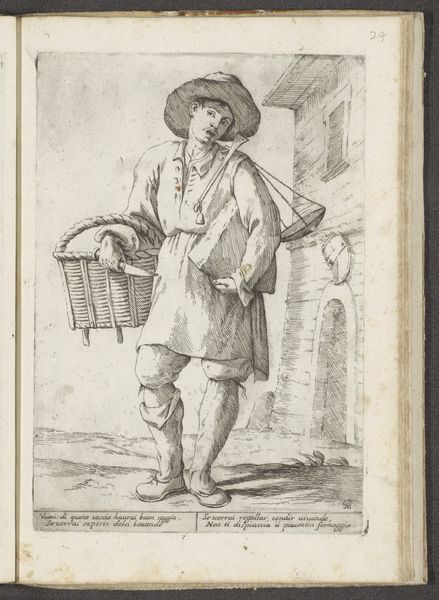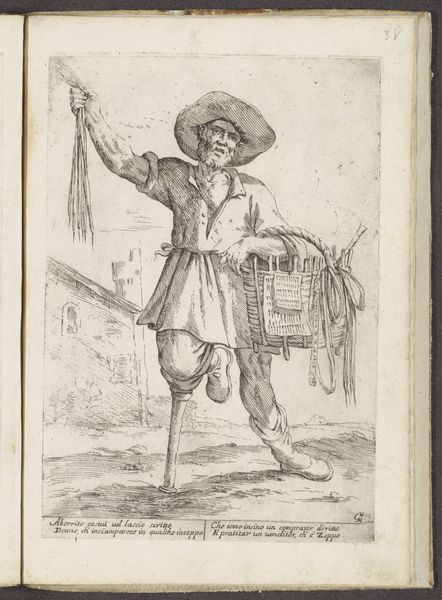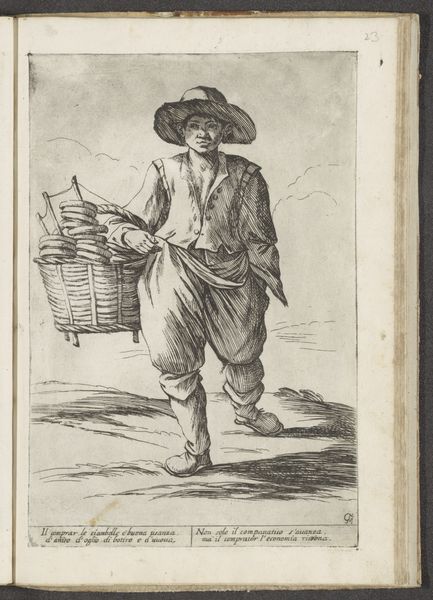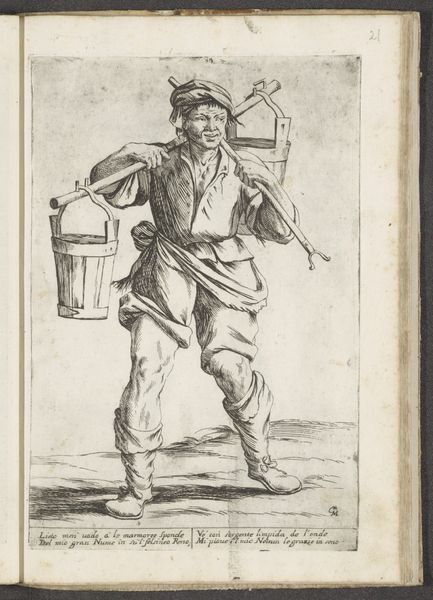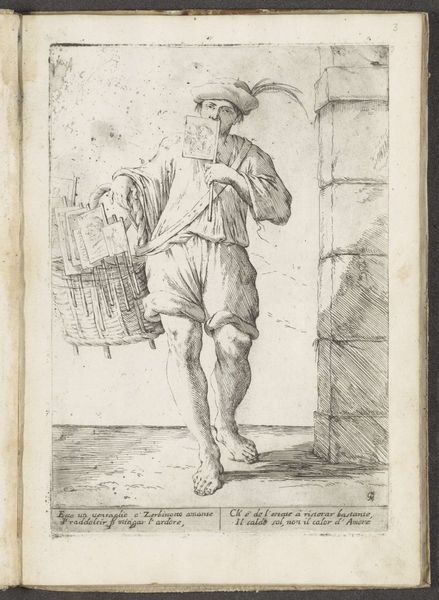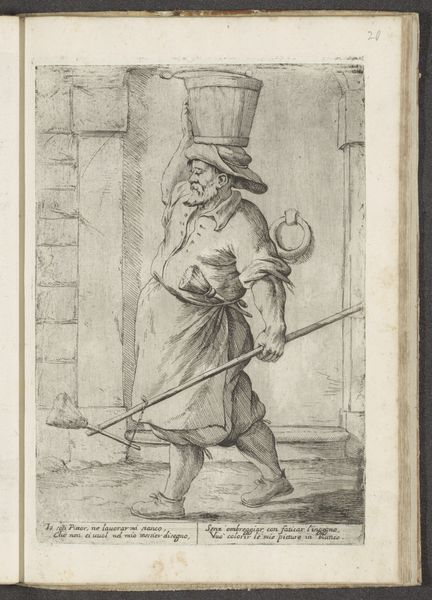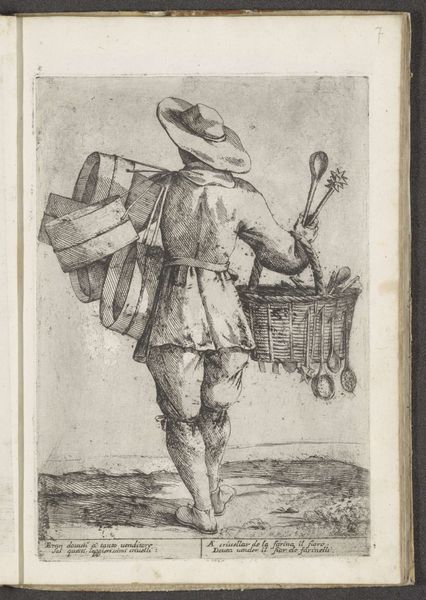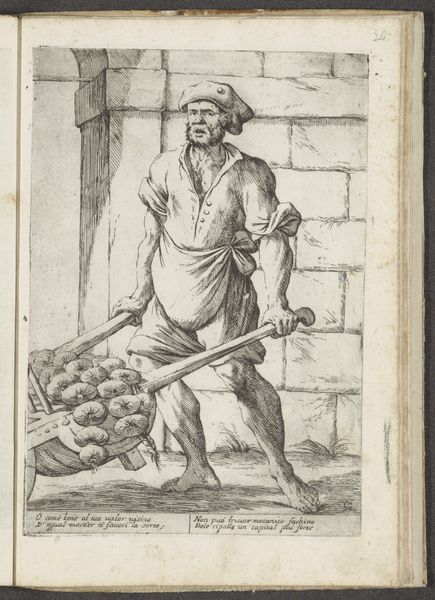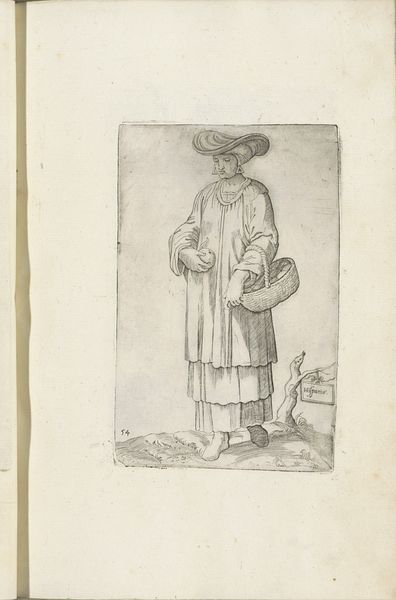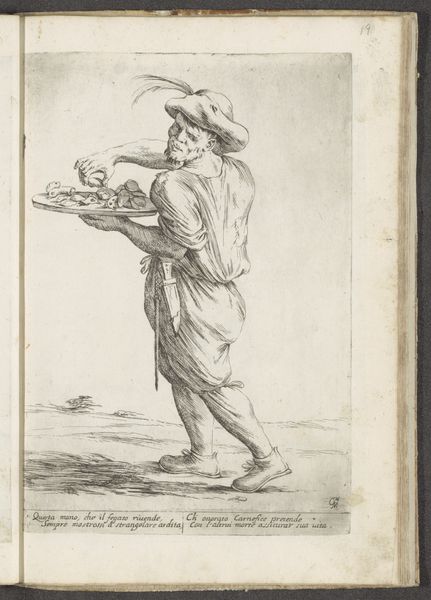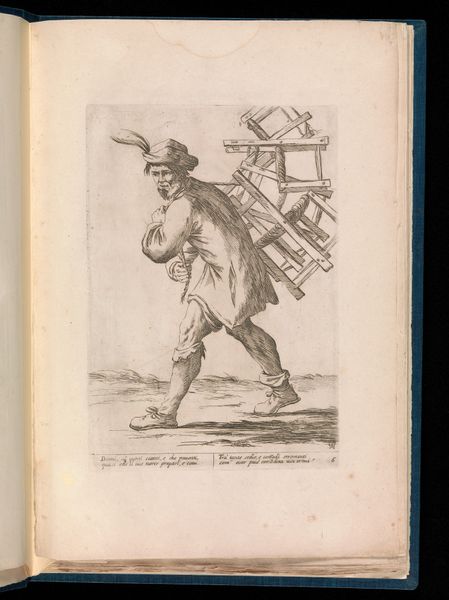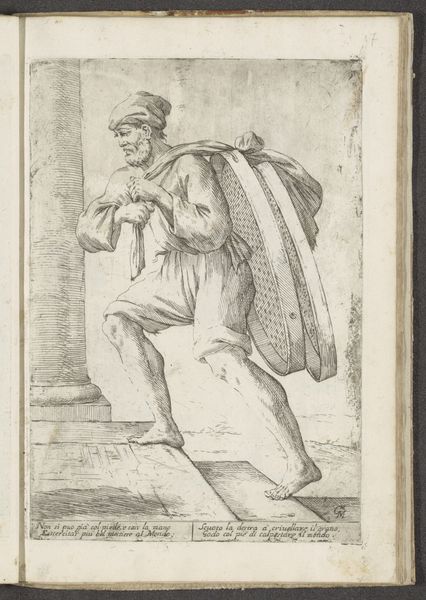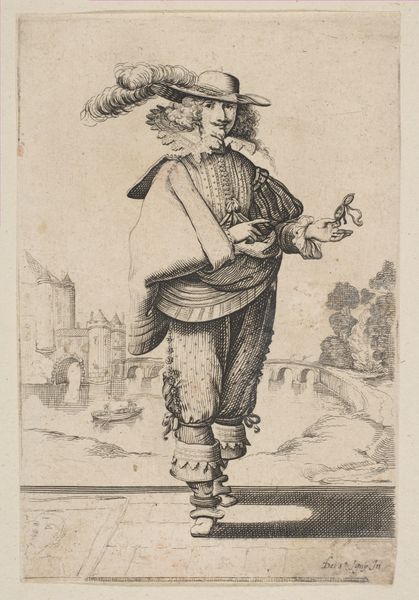
drawing, print, etching
#
portrait
#
drawing
#
baroque
# print
#
pen sketch
#
etching
#
figuration
#
line
#
cityscape
#
genre-painting
Dimensions: height 284 mm, width 195 mm
Copyright: Rijks Museum: Open Domain
Curator: Giuseppe Maria Mitelli’s “Metselaar,” created around 1660, offers us a fascinating glimpse into 17th-century working life through the medium of etching. Editor: It’s stark, isn’t it? All line and texture. There's a weightiness to the figure despite the thin lines; a real sense of toil conveyed. Curator: Precisely! Notice how the lines converge and diverge to define form, especially around the bricklayer’s hands and face. The Baroque interest in capturing human emotion and dynamism is subtly present even in this genre scene. Consider the use of hatching to create areas of shadow, giving depth to the figure. Editor: It’s impossible not to focus on those hands. Knotted, worn. And the tools he carries, a square and other implements – they aren’t idealized. They’re presented as functional, essential extensions of his labor. This piece screams about the physical realities of bricklaying, the material handling, the sheer effort. Curator: I agree, and the composition directs our eye to those aspects. The figure dominates the space, almost pressing against the architectural backdrop. There's a compelling tension between the individual and the city he’s helping to construct. Editor: And what about that inscription in the artwork! Even in that period the role and labor of those working with bricks seems worthy of documentation. The social position of these workers is the true heart of this piece, more so than geometry and the formal stuffiness that's popular elsewhere. Curator: A vital point! It adds layers to the meaning, challenging notions of labor being separate from the artistic endeavors. We’re confronted with both the aesthetic construction of an image and the tangible construction of the built environment. Editor: It really prompts reflection on how we value both the final structure and those who labor on creating that tangible structure and visual symbol. Curator: I'd add it shows us there is an artist *in* labor and the product *of* labor worthy of art, co-existing. Editor: A striking dialogue between hand, material, and form, isn't it? It gives us more to think about than simply composition and symmetry.
Comments
No comments
Be the first to comment and join the conversation on the ultimate creative platform.
